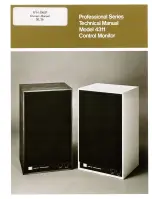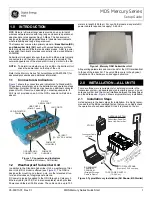
MDT Construction Manual – Issue 2
Page 7
4
D
IRECT
C
ONVERSION RECEIVER
Figure 2 shows the simplified diagram of a Direct Conversion receiver. As with a DSB generator
the mixer has two inputs and an output, but this time the signal directions are reversed.
Signals from the antenna are presented to the mixer, and mixed with the VFO signal. The output
again contains sum and difference signals. The sum frequency of 7. 7.100MHz
(14.201MHz) is easily filtered out by a low pass audio filter. However the difference frequency
of 7.101MHz – 7.100MHz (1KHz) can pass through the filter and be heard in the headphones.
This is the upper sideband response as the antenna signal frequency of 7.101MHz is above the
7.100MHz VFO frequency.
Note that there is also another antenna signal that can be heard. This is the lower sideband
signal at 7.099MHz. This would also produce a 1KHz tone in the headphones.
This ability to simultaneously detect both upper and lower sidebands is an important
characteristic of a Direct Conversion receiver.
Both Figure 1 and Figure 2 show a single 1KHz tone for the audio signal. This is done to make it
easier to understand the process involved. In practice there would be a range of voice band
frequencies present, but the same mixing conversion principle applies.
Figure 2 Direct Conversion receiver
Содержание MDT
Страница 1: ...MDT Construction Manual Issue 2 Page 1 MDT DSB TRANSCEIVER CONSTRUCTION MANUAL ...
Страница 8: ...MDT Construction Manual Issue 2 Page 8 5 MDT BLOCK DIAGRAM Figure 3 MDT Block diagram ...
Страница 12: ...MDT Construction Manual Issue 2 Page 12 Figure 4 Carrier oscillator ...
Страница 13: ...MDT Construction Manual Issue 2 Page 13 Figure 5 Mixer ...
Страница 14: ...MDT Construction Manual Issue 2 Page 14 Figure 6 Microphone Amplifier ...
Страница 15: ...MDT Construction Manual Issue 2 Page 15 Figure 7 Transmit ...
Страница 16: ...MDT Construction Manual Issue 2 Page 16 Figure 8 Receive Audio ...
Страница 32: ...MDT Construction Manual Issue 2 Page 32 Figure 20 Component overlay ...








































